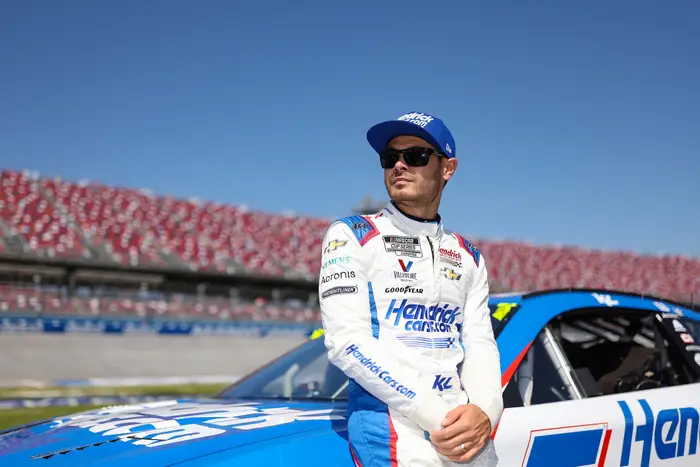
Kyle Larson’s race at Atlanta Motor Speedway in recent seasons has been a mix of high expectations and unexpected challenges. When analyzing what went wrong for Larson, several factors emerge that illustrate the complexities of NASCAR racing and the specific issues he faced at Atlanta.
### **1. **Handling and Setup Issues**
One of the primary issues Larson faced at Atlanta was related to handling and car setup. Atlanta’s unique track surface, which is known for its high wear and abrasive nature, often requires a specialized setup to handle its conditions. Larson’s car might have struggled with grip or balance, making it difficult for him to maintain competitive speeds. NASCAR tracks with older asphalt like Atlanta can be particularly challenging as the surface wears out, affecting traction and tire wear, which can impact a driver’s performance significantly.
### **2. **Pit Stop Problems**
Pit stops are critical in NASCAR, and any issues during this phase can drastically affect a driver’s race outcome. Larson’s team might have encountered problems during pit stops, such as slow tire changes, fuel issues, or mistakes in adjustments. These mistakes can cause drivers to lose valuable positions and time on the track. In the highly competitive environment of NASCAR, even minor pit stop issues can be detrimental to a race performance.
### **3. **Race Strategy and Execution**
Race strategy plays a crucial role in NASCAR, including decisions about when to pit, how to manage tires, and how to position the car for different phases of the race. Larson’s team might have struggled with strategic decisions, such as when to pit or how to respond to changes in the race conditions. Poor strategic choices can result in losing track position or not capitalizing on opportunities that arise during the race.
### **4. **Competitor Performance**
The performance of competitors also affects any given driver’s results. At Atlanta, Larson faced strong competition from other drivers who might have had better setups or made better strategic decisions. The competitive nature of the field means that even minor advantages by rival teams can significantly impact Larson’s ability to secure a top finish.
### **5. **Race Incidents**
Incidents during the race, such as collisions or being caught in other drivers’ mishaps, can also be a significant factor. Larson might have been involved in, or affected by, on-track incidents that disrupted his race. Damage from collisions or being caught up in debris can impact handling and overall performance, making it difficult to recover positions.
### **6. **Track Position and Traffic**
Managing track position and navigating through traffic is another critical aspect. At Atlanta, Larson may have struggled with getting caught in traffic or not being able to find clear air, which can hamper a driver’s ability to maintain speed and execute passes.
In conclusion, Kyle Larson’s difficulties at Atlanta can be attributed to a combination of handling and setup issues, potential pit stop problems, strategic decisions, strong competition, race incidents, and challenges with track position. Each of these elements contributes to the multifaceted nature of NASCAR racing and illustrates why Larson’s performance at Atlanta might have been suboptimal.
Leave a Reply